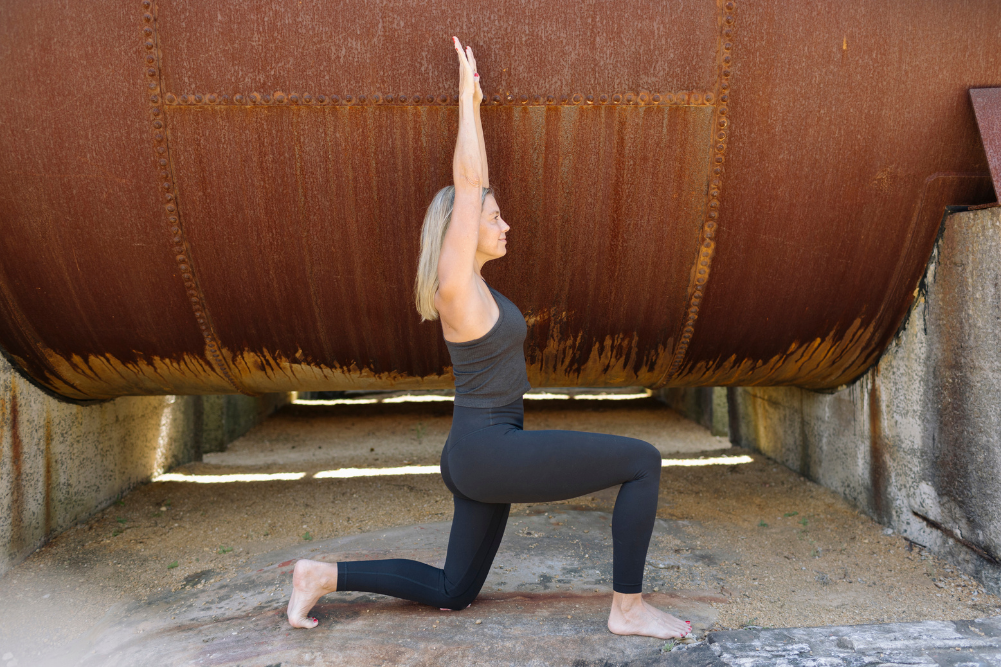How to fight a cold with yoga and ayurveda
As winter approaches, consider some Ayurvedic practices for dealing with the common cold, coughs and minor throat infections. It is not only preferable but extremely easy to replace a quick fix from the pharmacy with some ancient Ayurvedic knowledge, such as natural recipes to ease and treat the symptoms of throat and chest infections, along with yoga asanas (postures) to open up the throat and chest area and return the respiratory system to its original strength.
Remember, these remedies are not cures in themselves and what is most often the essential ingredient when recovering from winter ailments is rest.
Ayurvedic drinks for the common cold
When you have a cold, it’s important to consume a good quantity of liquids. However, avoid cold drinks and fizzy sodas in favour of hot, soothing drinks. Here are three great recipes for hot drinks that can be taken two or three times a day.
Herbal tea
- tsp black pepper powder
- tsp dry ginger powder
- tsp tulsi leaves
Boil the ingredients in 1 cup of water and strain.
Hot milk drink
Add half a tablespoon of pure turmeric powder to a cup of hot milk.
Hot ginger drink
Boil a fresh piece of ginger in a glass of water and strain.
Yoga for the common cold
Many people miss yoga classes when they have a cold, but certain yoga asanas are great for enhancing the healing process, as long as you remember to keep your practice gentle, relaxing and nurturing. While the immune system is weak you don’t want to put too much strain on your body. If you don’t feel comfortable attending a yoga class, there are some yoga asanas you can practise at home to help open up the areas that become congested when you have a cold.
Before you begin your yoga practice, remember the following:
- Find a place to practise where there are minimal distractions.
- Practise only on an empty stomach.
- The best time to practise is in the morning or evening, for two hours around sunrise or sunset.
- Practise in a room that’s well ventilated but warm.
- Don’t practise next to a heater.
- Take a warm shower or bath before you begin.
- Allow for 10 to 15 minutes of relaxation at the end of your practice.
The following are just three effective asanas that are beneficial when you have a cold. The first and third asanas, uttanasana and paschimottanasana, are recommended by Iyengar for recovery from colds and coughs.
1.Uttanasana (forward-bending pose)
Uttanasana is especially good for a cold, as it brings energy to the head and respiratory area and helps clear the sinuses.
Stage one: Stand up straight, feet together, arms by your sides. Breathe in deeply. As you exhale, bend forwards and place your fingers on the floor. If possible, place the palms of your hands on the floor by the sides of your feet, keeping your legs straight (unless the lower back hurts, in which case you can bend your legs to alleviate the pressure on the lower back). Start by holding your head up so your back is straight and your spine fully stretched. Take two long, deep breaths in this position.
Stage two: As you breathe out, lower your torso, taking your chest downwards and resting your head between your knees. Tighten your thighs, drawing your kneecaps up. Hold this position for one minute, breathing deeply and evenly, before returning to the standing position.
2.Kandharasana (shoulder pose)
Lie on your back with your body in a straight line. Slowly bend your legs and bring your heels as close to your buttocks as you can. Make sure your feet are flat on the ground. If possible, take hold of your ankles with your hands; otherwise, rest your hands on the ground next to your body. Take a deep breath in and, while holding your breath, gently lift the middle section of your body off the ground. Squeeze your buttocks. Release the breath slowly and gently and hold the position for a few seconds while breathing normally. Take a deep breath in; as you breathe out, gradually lower your body to the ground. Repeat two or three times. Relax completely on your back and breathe normally.
3.Paschimottanasana (back-stretching pose)
Sit on the floor with your legs stretched out in front of you. Take a deep breath in and raise your hands above your head. As you breathe out, move your torso forwards, moving from the pelvic area as opposed to hunching your shoulders forward. Take hold of your toes if you can, wrapping your index and middle fingers around your big toes, or just rest your hands on your shins, knees or thighs.
It’s not important to touch your head to your knees; what is important is that you move forwards from the pelvis until you reach that place where you can feel the stretch, finding a comfortable position in which you can remain steady. Remember, it’s different for everybody. Some people feel the stretch while sitting up straight, which is fine. Be where you are.
If you can take hold of your toes, do so. Pointing your elbows outwards, use your arms to pull you down towards your legs. Keep your back as straight as possible.
Ayurvedic remedy for treating a cold
The following remedy is good for sweating out all the toxins from the body during a cold and can be practised two or three times a day.
- 11 tsp dry basil or 11 fresh basil leaves
- 2g fresh ginger or <\#189> tsp ginger powder
- 5 black peppercorns
- sugar (optional; to taste)
- tsp small-leaf black tea
- milk (to taste)
Crush the first three ingredients and put them in a pot of boiling water (about 1 cup). Keep the pot on the stove with the heat on low. After boiling, filter the mixture and add the sugar (optional), small-leaf black tea and milk, and boil together. After drinking, lie down and cover yourself well with a warm blanket so you can sweat out all the toxins from your body.
Ayurveda for a sore throat
If you can react swiftly to the onset of a sore throat, you increase the chances of avoiding the potential discomfort that comes with a minor throat infection. Here are some ayurvedic suggestions to try as soon as the first sign of a sore throat appears:
- Gargle with either salt water or chamomile tea.
- Get plenty of rest.
- Drink plenty of liquids, especially hot herbal teas, freshly squeezed orange juice, and hot water with freshly squeezed lemon.
- Coffee and black tea are good in moderation.
- Keep yourself warm. Avoid exposure to cold air.
- Avoid cold foods.
- Avoid dairy products (for example, cheese, yogurt and milk).
Yoga for a sore throat
The principle is very simple: the yoga asanas that are beneficial for a sore throat are those that focus on opening the throat area.
Simhasana (lion pose)
Sit on your heels and then move your knees apart a width equal to the length of your forearm. Keep your big toes touching. Lean forward slightly and place your hands on the floor between your knees, your fingers pointing towards you. Keep your arms straight while allowing the weight of your body to be supported by them.
Now slightly arch back and tilt your head gently backwards — not all the way, but just enough to create a small amount of tension in your neck. You can either close your eyes or keep them open, gazing skywards. Keep your mouth closed and relax your body as much as you can.
According to Swami Satyananda Saraswati, this asana is best performed by focusing your attention on the place between your eyebrows, quickly and easily inducing a state of relaxation or meditation. As the immune system is commonly weak when you have a cold or flu, your body needs deep rest. Meditation is known to provide rest deeper than that received during sleep, which makes the lion pose especially useful when you are dealing with or recovering from a cold.
Final relaxation
For final relaxation, position yourself on the floor facing a wall and move as close as you can to it. With your upper body on the floor, bring your knees close to your chest so you can touch your buttocks to the wall, then swing your legs up to the wall. Relax your arms at your sides. Start by keeping your legs straight, with your feet pointing directly upwards, and hold this position for three to five minutes. Then allow your legs to fall apart to the sides, still keeping them straight. Hold for another three to five minutes, keeping your body relaxed and your eyes gently closed.
While holding these two positions, breathe deeply and slowly, taking the breath into your belly. Feel your belly expanding as you inhale, and suck your belly gently down towards your spine as you breathe out. This position is not only relaxing but also easily opens up the chest area.
Ayurvedic remedies for coughs and minor throat infections
Lozenge for calming coughs and treating sore throats
- 1 tsp cardamom
- 1 tsp laurel leaves
- 1 tsp cinnamon
- 15 pepper seeds
- 25g licorice root
- 25g dried dates
- 15g dried raisins
- honey (enough to make a paste)
Crush all the ingredients except the dates, raisins and honey, making as fine a powder as you can. Crush the dates and raisins separately and then mix them with the powder to form a paste; add the honey. You can either use the mixture as it is (take a teaspoon or two) or take small amounts of it in your hands and make lozenges (have one whenever your throat feels sore).
Remedy for treating coughs
- 1 tsp grated fresh ginger
- 3 semi-crushed black peppercorns
- 2 tsp honey
Mix the ingredients together and take twice a day, including once before you go to sleep at night.
What else can you do?
- To create an uplifting environment, burn a few drops of anise oil in an oil burner. Anise is cheering and sense-enhancing and is often used for coughs, asthma and bronchitis to open respiratory system passageways.
- Fenugreek is very useful for the respiratory system and is especially good for sore throats and bronchitis.
- St John’s wort has a calming effect on the nervous system, which is often left stressed after fighting colds or flu.
- Licorice root supports the immune system and is excellent for soothing irritation in the throat and bronchial area.
- Fresh air and outdoor exercise are as important as any remedy. Take time for a daily walk, even when it’s cold.
- It’s best to avoid foods that induce mucus, such as dairy products, rice and non-vegetarian foods.
References
BKS Iyengar, Light on Yoga (New Delhi, India, 1992), 493.
Adapted from Dr Vinod Verma, Ayurveda: A Way of Life (New Delhi, India, 1995), 220.
Swami Satyananda Saraswati, Asana Pranayama Mudra Bandha (Bihar, India, 1997), 107.
Meggan Brummer is a teacher of the Art of Living courses designed by His Holiness Sri Sri Ravi Shankar; they include a combination of yoga, meditation, ancient wisdom and breathing techniques. E: meggan@artofliving.org.au, W: www.artofliving.org.au







